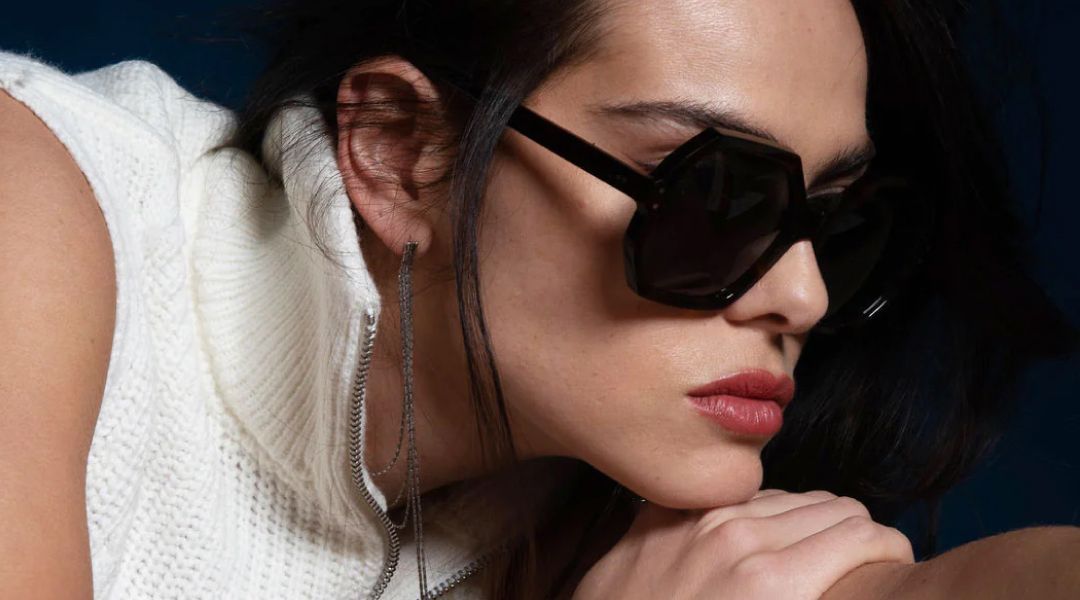Oversized Eyewear: Making a Statement with Size

Read time: 4 minutes
Fashion is all about self-expression and making a statement. One accessory that can speak volumes about your personal style is eyewear, and when it comes to making a bold statement, oversized eyewear is the way to go. These larger-than-life glasses and sunglasses have been a popular fashion trend for years, and for good reason. Not only do they provide excellent eye protection, but they also add a touch of glamour and personality to your overall look.
Let's delve into the world of oversized eyewear, exploring the allure that makes them so irresistible, offering tips on how to choose the perfect pair, and providing a variety of stylish ideas to help you confidently embrace this fashion trend.
The Allure of Oversized Eyewear
Oversized eyewear, including both frames and sunglasses, has an undeniable charm that captivates fashion enthusiasts across the globe. Here are some compelling reasons behind their enduring popularity:
- Bold and Dramatic: Oversized eyewear immediately draws attention to your face, making them a perfect choice for individuals who love to stand out. They exude a sense of confidence and charisma that is hard to ignore.
- Versatile: These frames and sunglasses come in a range of shapes, from square to round, oval, and everything in between. With so many options available, you can easily find a style that suits your face shape and complements your personal fashion sense.
- Statement Accessory: Oversized eyewear can effortlessly elevate a simple outfit into a fashion statement. They add a touch of sophistication and flair to your overall look, making you stand out in any crowd.
- UV Protection: Don't be fooled by the glamour; oversized sunglasses are designed to offer superior protection from harmful UV rays. So, while you're looking stylish, your eyes are kept safe from the sun's damaging effects.
Choosing the Right Oversized Eyewear
Selecting the perfect pair of oversized eyewear, be it frames or sunglasses, requires some consideration. Here are some essential tips to ensure you make the right choice:
- Face Shape: Start by identifying your face shape (round, oval, square, heart, etc.). This knowledge will guide you in selecting eyewear that complements your features. Oversized eyewear, when chosen correctly, can accentuate your best attributes.
- Color: Choose eyewear with a frame color that complements your skin tone and your existing wardrobe. Classic black or tortoiseshell frames are versatile options, but don't be afraid to experiment with bold and unconventional colors for a unique look.
- Material: Oversized eyewear comes in various materials, including acetate, metal, and plastic. Consider your comfort and durability preferences when making a choice.
- Fit: Comfort is key. Ensure that your chosen eyewear fits snugly on your nose and ears. Oversized eyewear should be comfortable to wear all day without causing any discomfort or slipping.
Styling Oversized Eyewear
Now that you've found your perfect pair of oversized eyewear, the fun part begins: styling! Here are some ideas to help you rock this trend with confidence:
- Classic Chic: Elevate your work or formal attire by pairing your oversized eyewear with a tailored blazer, a crisp white shirt, and a high-waisted pair of trousers. This classic combination exudes sophistication and elegance.
- Boho Vibes: Embrace your inner bohemian spirit by teaming your oversized eyewear with flowy maxi dresses, layered necklaces, and loose, wavy hair. This look is perfect for a relaxed, carefree vibe.
- Casual Cool: For a laid-back, everyday look, combine your oversized eyewear with a graphic tee, distressed jeans, and a cozy cardigan. It's a comfortable and trendy style for everyday wear.
- Glamorous Evenings: Opt for oversized eyewear with embellishments or rhinestones to add a touch of glamour to your evening attire. These frames and sunglasses pair perfectly with a sleek cocktail dress or a chic pantsuit for a night out on the town.
The Takeaway
Oversized eyewear, including frames and sunglasses, is more than just a functional accessory; it's a fashion statement that can enhance your overall style and provide essential eye protection. By choosing the right eyewear that suits your face shape and personal style, you can turn heads wherever you go. So, if you're ready to make a bold fashion statement, don't shy away from oversized eyewear – they are your perfect ticket to standout style and protection for your eyes. Embrace the allure of oversized eyewear, and step confidently into the world of larger-than-life fashion.
If you're on the lookout for a stunning pair of oversized frames that suits your unique style, look no further than Urban Optiks Optometry. We understand that finding the perfect pair is a personal journey, and that's why we offer the expertise of our Frame Stylists and Opticians who can guide you through the entire selection process. Your perfect pair of oversized frames awaits, and we're ready to help you make your fashion statement with size. Make a shopping appointment today or peruse our entire line of in-stock inventory at our virtual storefront.
Share this blog post on social or with a friend:
The information provided in this article is intended for general knowledge and educational purposes only and should not be construed as medical advice. It is strongly recommended to consult with an eye care professional for personalized recommendations and guidance regarding your individual needs and eye health concerns.
All of Urban Optiks Optometry's blog posts and articles contain information carefully curated from openly sourced materials available in the public domain. We strive to ensure the accuracy and relevance of the information provided. For a comprehensive understanding of our practices and to read our full disclosure statement, please click here.


















